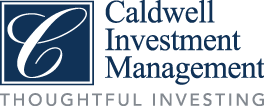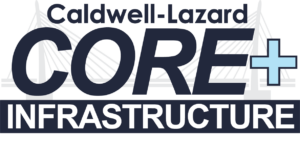Market Overview
Global equity markets saw their five-month rally come to an end in April, as the expectation for impending U.S. interest rate cuts began to change.
The month was marked by unwelcome news out of the U.S., where the latest reading from a closely watched gauge of domestic inflation came in hotter than expected for a third consecutive month in March, stoking anxiety that the progress the Federal Reserve’s (“Fed”) campaign had made in slowing price increases had stalled. After signaling earlier that it could cut interest rates three times this year, a string of economic reports, released during the month, suggesting stubbornly persistent inflationary pressure led the world’s most influential central bank to warn that it may need to adopt a “higher for longer” interest rate policy posture until it gains greater confidence that price growth was headlining sustainably toward its 2% target. The Fed’s warning that it may keep borrowing costs at their current 23-year high for a protracted period triggered a rise in government bond yields that put global stocks under pressure by undercutting their appeal. By the end of April, market pricing indicated that most investors were betting that the Fed would deliver its first rate cut in September or later, though a growing number were bracing for the possibility of no reductions at all in 2024. The yield on the benchmark 10-year U.S. Treasury note ended April at 4.69%, 48 basis points (“bps”) higher than a month earlier.
Elsewhere in the world, the European Central Bank (“ECB”) held interest rates steady at a record high in April, marking the fifth consecutive policy meeting at which it has done so. With inflation in the eurozone drifting downward toward its 2% target, the ECB sent a strong signal that it could lower interest rates in June, which if realized, would represent a possible divergence in monetary policy with the Fed. In April, the yield on the 10-year German Bund, Europe’s principal safe-haven asset, rose 28 bps, ending the month at 2.59%. Meanwhile, in Japan, the Bank of Japan (“BOJ”) kept interest rates near zero in April, a month after raising them for the first time in 17 years and marking the end of eight years of negative rates. Japan’s central bank expressed confidence that the country’s economy can achieve sustainable 2% inflation after decades of stagnation, which could open the door for possible rate hikes later this year. However, the lack of clarity by the BOJ on its monetary tightening path sparked a sharp depreciation of the yen against the U.S. dollar, which led Japanese authorities to carry out an aggressive intervention in the currency markets to prop up the yen in the final days of April.
While investors were downbeat about news coming out of the U.S., they found solace from positive developments in China, where the government has made increasingly forceful efforts in recent months to raise Chinese stock prices, including encouraging state-linked financial service companies to buy exchange-traded funds onshore. Investor sentiment was further boosted during the month by reports that the Chinese government was preparing to provide a “real solution” to China’s real estate crisis, and signs that the country’s economic outlook was improving. In April, the Hong Kong-based Hang Seng Index, which is comprised mostly of companies from mainland China and serves as a gateway for foreign investors wanting to invest there, was one of the best-performing stock markets in the world, ending the month hovering near bull-market territory from its low in January.
The start of the new earnings season painted a mixed picture of how interest-rate headwinds have impacted company profits. In the U.S., 78% of the companies in the S&P 500 Index that reported results topped consensus estimates, which was above the long-term average of 67%. The first-quarter earnings growth rate is estimated to have increased 4.5% from a year earlier. In Europe, 47% of the companies in the STOXX 600 Index that reported results posted better-than-expected earnings, below the 54% that do so in a typical quarter. The year-over-year first-quarter earnings growth rate is expected to have contracted 11.0%. In Japan, 54% of the companies in the TOPIX reported positive earnings surprises, which was below the 59% beat rate over the past four quarters. The first-quarter earnings growth rate is estimated to have decreased 1.8% from a year earlier.
Against this backdrop, equity markets in the developed world retreated in April while those in the developing world rose modestly. In the U.S., the S&P 500 underperformed, as news that the Fed might keep interest rates “higher for longer” weighed on risk appetites. Across the Atlantic, the pan-European STOXX 600 fell but outperformed, as lukewarm earnings results tempered optimism that interest rate cuts from the ECB were forthcoming. In Japan, the TOPIX fell sharply, as shares of heavyweight technology companies sold off on profit-taking after strong recent stock price appreciation. Elsewhere in Asia, the Hong Kong-based Hang Seng Index surged, as policy support from China’s government and signs that the country’s economic outlook was improving boosted risk appetites.
Real estate was the worst-performing sector in April, as shares of U.S.-based real estate investment trusts (‘REITs’) remained under pressure due to the surge in government bond yields, which undercut the appeal of high dividend-paying stocks. Utilities was the best-performing sector, as investors bet that the emergence of artificial intelligence (‘AI’) will require vast amounts of electricity to power datacenters.
Outlook
April’s performance represented a significant short-term setback to portfolio performance but does not materially change our investment outlook nor diminish our optimism for the broader opportunity set associated with infrastructure and related business activities. Key sources of pressure on performance during April—both absolute and relative to the benchmark—included a late-stage flare up of concerns regarding higher interest rates that have already begun to temper as well as the portfolio’s material underweight position in U.S. utilities, which staged an uncharacteristic spike of outperformance versus most included sectors. In contrast, our portfolio is designed to both structurally take advantage of compelling opportunities that go well beyond heavy concentration in traditional utilities, and tactically, for an inflection in monetary policy, with decelerating inflation allowing for stabilization in interest rates before an eventual reduction. We remain highly confident and enthusiastic about our investment strategy and positioning for the long-term.
Moreover, while performance of infrastructure as an asset class, with its above average sensitivity to interest rates, has had a tough time keeping up, performance-wise, with broad-based growth equity indices recently, the combination of defensive business models, highly predictable revenues and cash flows, and strong inflation pass-through characteristics has demonstrated commendable resilience and we find the investment category trading at considerably more attractive valuations vis a vis broad market indices.
We believe this leaves publicly-listed infrastructure equities well positioned to benefit from a continued brisk pace of investment, with plenty of runway ahead, and an end to the rate-hiking cycle, when we expect eventual lower interest rates will be used to discount cash flows that have been adjusted higher either for regulatory or contractual inflation-adjustment, or the indirect benefit of inflation adjustment that tends to stem from owning and operating high fixed cost, long life assets.
The information contained herein provides general information about the Fund at a point in time. Investors are strongly encouraged to consult with a financial advisor and review the Simplified Prospectus and Fund Facts documents carefully prior to making investment decisions about the Fund. Commissions, trailing commissions, management fees and expenses all may be associated with mutual fund investments. Mutual funds are not guaranteed; their values change frequently and past performance may not be repeated.
Information and opinions presented have been obtained or derived from sources believed by Lazard Asset Management LLC or its afflliates (“Lazard”) to be reliable. Lazard makes no representation as to their accuracy or completeness. All opinions expressed herein are as of the published date and are subject to change.
Allocations and security selection are subject to change. The performance quoted represents past performance. Past performance is not a reliable indicator of future results. Mention of these securities should not be considered a recommendation or solicitation to purchase or sell the securities. It should not be assumed that any investment in these securities was, or will prove to be, profitable, or that the investment decisions we make in the future will be profitable or equal to the investment performance of securities referenced herein. There is no assurance that any securities referenced herein are currently held in the portfolio or that securities sold have not been repurchased. The securities mentioned may not represent the entire portfolio.
Equity securities will fluctuate in price; the value of your investment will thus fluctuate, and this may result in a loss. Securities in certain non-domestic countries may be less liquid, more volatile, and less subject to governmental supervision than in one’s home market. The values of these securities may be affected by changes in currency rates, application of a country’s specific tax laws, changes in government administration, and economic and monetary policy. Emerging markets securities carry special risks, such as less developed or less efficient trading markets, a lack of company information, and differing auditing and legal standards. The securities markets of emerging markets countries can be extremely volatile; performance can also be influenced by political, social, and economic factors affecting companies in these countries.
Securities and instruments of infrastructure companies are more susceptible to adverse economic or regulatory occurrences affecting their industries. Infrastructure companies may be subject to a variety of factors that may adversely affect their business or operations, including additional costs, competition, regulatory implications, and certain other factors.
Certain information contained herein constitutes “forward-looking statements” which can be identified by the use of forward-looking terminology such as “may,” “will,” “should,” “expect,” “anticipate,” “target,” “intent,” “continue,” or “believe,” or the negatives thereof or other variations thereon or comparable terminology. Due to various risks and uncertainties, actual events may differ materially from those reflected or contemplated in such forward-looking statements.
Published on May 16, 2024.

